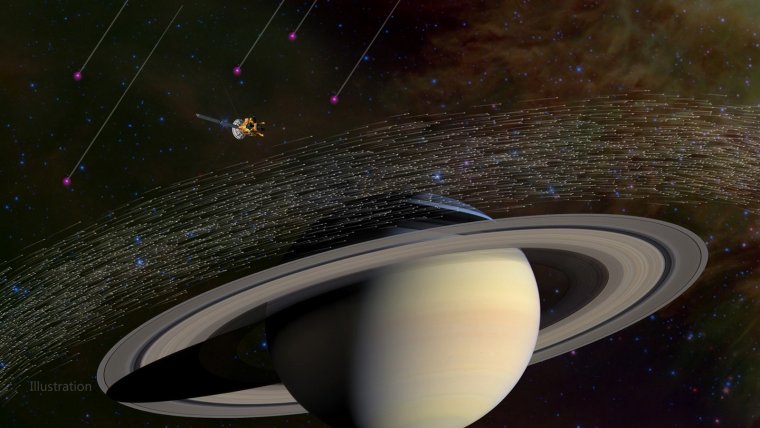| News / Space News |
Saturn Spacecraft Samples Interstellar Dust
NASA | APRIL 14, 2016
NASA's Cassini spacecraft has detected the faint but distinct signature of dust coming from beyond our solar system.

Of the millions of dust grains Cassini has sampled at Saturn, a few dozen appear to have come from beyond our solar system. ![]()
Cassini has been in orbit around Saturn since 2004, studying the giant planet, its rings and its moons. The spacecraft has also sampled millions of ice-rich dust grains with its cosmic dust analyzer instrument. The vast majority of the sampled grains originate from active jets that spray from the surface of Saturn's geologically active moon Enceladus.
But among the myriad microscopic grains collected by Cassini, a special few -- just 36 grains -- stand out from the crowd. Scientists conclude these specks of material came from interstellar space -- the space between the stars.
Alien dust in the solar system is not unanticipated. In the 1990s, the ESA/NASA Ulysses mission made the first in-situ observations of this material, which were later confirmed by NASA's Galileo spacecraft. The dust was traced back to the local interstellar cloud: a nearly empty bubble of gas and dust that our solar system is traveling through with a distinct direction and speed.
The tiny dust grains were speeding through the Saturn system at over 45,000 mph (72,000 kilometers per hour), fast enough to avoid being trapped inside the solar system by the gravity of the sun and its planets.
Stardust grains are found in some types of meteorites, which have preserved them since the birth of our solar system. They are generally old, pristine and diverse in their composition. But surprisingly, the grains detected by Cassini aren't like that. They have apparently been made rather uniform through some repetitive processing in the interstellar medium, the researchers said.
YOU MAY ALSO LIKE

